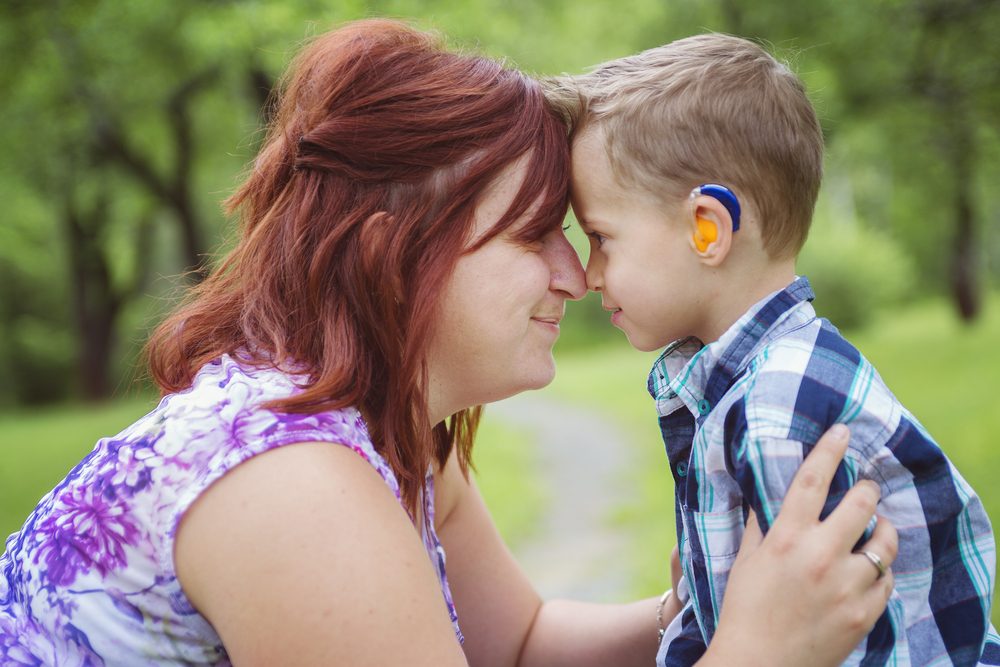
Take a moment to reflect on the importance of a perception of sound in your daily life. Your morning alarm clock. Crossing the road. Using the telephone or following a conversation. It’s easy to take for granted how essential a sense of hearing is to your daily functioning, and how disabled you may be without it.
How common is hearing loss?
In the UK approximately 1 in 6 people may have a degree of hearing loss or deafness – that’s about 11 million people. Of these, 900,000 will suffer with profound deafness and 45,000 will be children. 1
Could you have hearing loss?
Hearing loss is often a gradual process, although in some conditions it can also be sudden. Symptoms of hearing loss may include finding it harder to follow conversations or needing to turn the volume on the television up loud to hear it.
What are the causes of hearing loss?
Hearing loss can be broadly split into two types:2
1. Conductive hearing loss
This is due to a problem with sound waves reaching the inner ear from the outer ear. Possible causes of this include:
- Blockages from ear wax or foreign bodies
- A build up of fluid in the inner ear, e.g. glue ear or otitis media, an inner ear infection
- A perforated ear drum
- Otosclerosis – the bones of the inner ear become thickened and less mobile, reducing sound transmission
- Malformation of the ear
- Poor function of the Eustachian Tube (a narrow tube that connects the space behind the eardrum with the back of the nose)
- Cholesteatoma – a destructive and expanding collection of abnormal cells in the inner ear
2. Sensorineural hearing loss
Sensorineural deafness occurs when there is damage to the inner ear (the cochlea) or the nerve pathways to the brain. This might be related to nerve damage or damage to the sensitive hair cells in the inner ear. Possible causes of this include:
- Age-related hearing loss, otherwise known as “presbycusis.” This will affect higher frequencies of sound (for example from children and female voices). Age is the biggest cause of hearing loss
- Noise-induced hearing loss. This is more common in people who work in noisy environments, for example in a nightclub or with noisy machinery. Exposure to loud noise can damage the sensitive hair cells of the inner ear that send messages to the brain
- Congenital hearing loss – babies are born with hearing loss because of an inherited condition affecting the inner ear or auditory nerve, or due to an acquired infection whilst in the womb (for example if the mother is infected with mumps or rubella)
- Viral conditions affecting the auditory nerves
- Infections in and around the brain, e.g. encephalitis and meningitis
- Acoustic neuroma – a non-cancerous tumour near the auditory nerve
- Meniere’s disease – a condition that causes attacks of vertigo, hearing loss and tinnitus
- Neurological conditions such as multiple sclerosis
- Medications – certain medications can be “ototoxic” and damage the ear. For example, some chemotherapy medications
When should I seek advice?
All hearing loss can be troubling, so there is no harm in seeking advice early. However, if you have sudden hearing loss, that is one sided, or associated with tinnitus or pain, see your GP for a more urgent appointment.
How is hearing loss diagnosed?
Your GP will examine your ear with an otoscope to see if there are any obvious contributing causes, such as wax in the ear. They may need to refer you to an audiologist or a specialist in Ear Nose and Throat (ENT) conditions for further investigations. This may include audiometry, where you will undergo a hearing test of sounds at different volumes and frequencies. Another test called a Tympanogram, assessing the inner ear, may also be conducted. CT and MRIs aren’t normally needed, but may be used if the specialist wants to look at the inner ear or brain in more detail.
Treatment
Treatment for hearing loss depends on the cause. Many types of conductive hearing loss can be reversed, for example clearing the ear of wax or infection or allowing a perforation to heal.
Sign language and lip reading can help those who suffer with hearing impairment to communicate.
Hearing aids 2
A hearing aid can help to improve your perception of sound and quality of life. There are a huge variety of modern-day hearing aids to suit a patient’s individual needs. Conventional hearing aids work by amplifying sound waves reaching the ear canal. These range from behind-the-ear devices to discrete inner-ear devices.
Bone Conducting Hearing Aids are an option for patients with conductive or mixed hearing loss who may struggle to wear conventional hearing aids. Instead of carrying sound waves through the canal, the aid transmits it via the bone in the skull. Bone Conducting Hearing Aids can be worn as a headband or via a small surgical procedure anchoring the device into the skull.
Middle ear implants are another version of hearing aids, where a small operation attaches the device to the ear bones and makes them vibrate.
Cochlear implants
Cochlear implants are an option for patients with more severe hearing loss. They are very different to hearing aids – rather than amplifying sounds so that damaged ears may detect them, they instead bypass damaged portions of the ear and directly stimulate the auditory nerve. A device is surgically implanted into the skin behind the ear and transmits a signal to a part of the inner ear called a cochlear. Your auditory nerve must be functional for this to work. If there is a problem with the nerve, an auditory brainstem implant could be an alternative. This device is inserted surgically, and consists of a small implant placed in the skin behind the ear.
Preventing Hearing Loss
Long-term and repeated exposure to noise levels greater than 80dB can lead to hearing loss over time. An example of sounds at this level may be a passing truck, or a lawnmower. If you are regularly exposed to high levels of background noise, protecting your hearing could help to prevent noise-induced hearing loss from developing. Wear earplugs or ear defenders if you work in a noisy environment and avoid listening to music too loud.
This article is for information only and should not be used for the diagnosis or treatment of medical conditions. myHealthSpecialist makes no representations as to the accuracy or completeness of any of the information in this article, or found by following any link from this article. Please consult a doctor or other healthcare professional for medical advice.

Dr Anna Cantlay, GP
Read Dr Anna Cantlay’s other articles:
Herbs for menopause – does natural mean safe?
Should the NHS be “PrEPing’ patients in the battle against HIV?
Is your job literally “suffocating” you?
When is the “right time” to try for a baby?
Vitamin D – The Sunshine Vitamin
Follow Dr Anna Cantlay on Instagram: doctoranna_gp